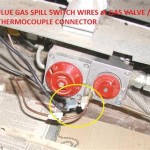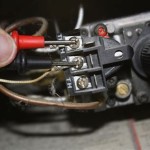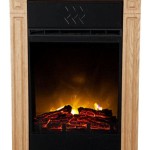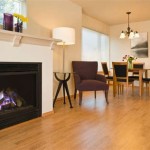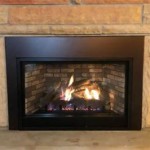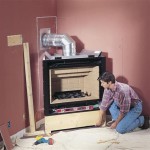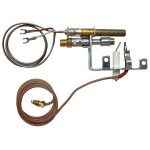High Efficiency Wood Fireplaces: A Comprehensive Overview
Wood fireplaces, a traditional source of warmth and ambiance, have evolved significantly in recent years. Modern high efficiency wood fireplaces offer improved heating capabilities, reduced emissions, and enhanced safety features compared to their older counterparts. This article provides a detailed exploration of high efficiency wood fireplaces, examining their functionality, advantages, and factors to consider when selecting a unit.
A high efficiency wood fireplace is defined by its ability to convert a significant portion of the wood's energy into usable heat for the home. This is achieved through advanced combustion technologies, air circulation systems, and insulated fireboxes. The efficiency rating, typically expressed as a percentage, indicates the proportion of the wood's energy that is effectively transferred as heat rather than being lost up the chimney. Traditional open fireplaces often have extremely low efficiency ratings, sometimes below 10%, while high efficiency models can achieve ratings of 70% or higher.
Understanding the Technology Behind High Efficiency
The key to high efficiency wood fireplaces lies in optimizing the combustion process. Traditional fireplaces often suffer from incomplete combustion, resulting in the release of unburned particles and gases, contributing to air pollution and reducing overall heating efficiency. High efficiency models utilize several techniques to address this issue.
One important feature is a sealed combustion chamber. This restricts the airflow to a controlled intake, preventing excessive drafts and allowing for a more complete and consistent burn. This controlled environment allows for higher temperatures to be reached, leading to more thorough combustion. The use of a gasketed door is also integral to seal the fireplace, preventing uncontrolled drafts that can both diminish efficiency and pose a fire hazard.
Secondary combustion systems are also crucial. These systems introduce additional air into the firebox to burn off the remaining gases and particles that would otherwise escape as smoke. This secondary combustion process significantly reduces emissions and extracts additional heat from the fuel. Baffle systems are strategically positioned within the firebox to direct airflow and create turbulence, further enhancing the combustion process. These baffles help to retain heat within the firebox for an extended period, contributing to higher overall efficiency.
Catalytic combustors are another advanced technology used in some high efficiency wood fireplaces. These devices contain a catalyst, typically a metal such as palladium or platinum, that lowers the ignition temperature of the unburned gases and particles. This allows for combustion at lower temperatures, improving efficiency and reducing emissions even further. Non-catalytic models achieve secondary combustion through careful design and airflow management, avoiding the need for a catalytic combustor.
Benefits of Choosing a High Efficiency Wood Fireplace
The advantages of opting for a high efficiency wood fireplace extend beyond simply saving on fuel costs. These units offer a range of benefits that make them a compelling heating solution for many homeowners.
Firstly, the reduced fuel consumption translates directly into cost savings. By extracting more heat from each log, homeowners can significantly decrease the amount of wood required to heat their homes, lowering fuel expenses and reducing the labor involved in procuring and storing firewood. This efficiency also contributes to environmental benefits by reducing the demand for wood resources.
Secondly, high efficiency models produce significantly lower emissions than traditional fireplaces. This is due to the more complete combustion process, which reduces the release of pollutants such as particulate matter, carbon monoxide, and volatile organic compounds (VOCs). Lower emissions contribute to improved indoor air quality and reduce the environmental impact of wood burning. Many high efficiency models meet strict EPA (Environmental Protection Agency) emission standards, ensuring they operate cleanly and efficiently.
Thirdly, the improved heat output allows for more effective heating of larger spaces. High efficiency wood fireplaces are designed to circulate heat throughout the home using various methods, such as convection or blowers. This allows for more even heat distribution and prevents localized overheating. Some models are even capable of heating entire homes, serving as a primary heating source.
Fourth, modern high efficiency wood fireplaces incorporate advanced safety features. Features such as airtight doors, spark screens, and temperature control systems help to prevent accidents and ensure safe operation. These features provide peace of mind for homeowners and minimize the risk of fire hazards.
Factors to Consider When Selecting a High Efficiency Wood Fireplace
Choosing the right high efficiency wood fireplace requires careful consideration of several factors to ensure it meets the specific needs and requirements of the homeowner. These include the size of the area to be heated, the desired aesthetics, and the available installation space.
The heating capacity of the fireplace is a crucial factor. This is typically measured in British Thermal Units (BTUs) and indicates the amount of heat the unit can produce. It is important to select a fireplace with a BTU rating appropriate for the size of the space to be heated. A fireplace that is too small will struggle to maintain a comfortable temperature, while one that is too large may lead to overheating.
The design and style of the fireplace is another important consideration. High efficiency models are available in a wide range of styles, from traditional to contemporary, to complement the décor of the home. Factors such as the shape of the firebox, the type of door, and the finish of the surround should be taken into account.
Installation requirements must also be carefully assessed. Some high efficiency wood fireplaces can be installed as freestanding units, while others require a masonry chimney or a dedicated venting system. It is essential to consult with a qualified professional to ensure the fireplace is installed correctly and safely, complying with all local building codes. Proper venting is crucial for safety and performance. It ensures combustion gases are safely expelled from the home, preventing carbon monoxide poisoning.
Finally, the cost of the fireplace and its installation should be factored in. High efficiency models typically have a higher initial cost than traditional fireplaces, but the long-term savings in fuel costs can offset this expense. It is important to obtain quotes from multiple suppliers and installers to compare prices and ensure the best value for money.

High Efficiency Performance Wood Fireplaces Valcourt

High Efficiency Performance Wood Fireplaces Valcourt

Is A Wood Stove Right For You Napolis In The Mad Hatter

Superior Wct6940ws High Efficiency Wood Fireplace Fine S Gas

What Are The Most Efficient Stoves To Buy Direct

High Efficiency Wood Burning Stove A2 China Made In Com

Rsf Focus St See Through Wood Burning Fireplace Ottawa On Install

Regency Wood Insert Archives Energy Resources

High Efficiency Wood Stove Epa Approved

High Efficiency Wood Fireplaces Maritime
Related Posts

